Blog categories
Blog archive
RSS Blog posts tagged with 'lighting'
Blog Filters
Bathe in Light: 5 Bathroom Lighting Tips to Enliven Your Bathing Space
Friday, November 20, 2020
Lighting for the bathroom is often an afterthought. It's actually important to plan it right so that you can achieve the ambience you want. These five lighting tips for the bathroom will show you how to get lighting up and running beautifully in your bathing space. 1. The Right Lighting Proper and plentiful light in the bathroom has many useful benefits. That includes setting your circadian rhythms that are an important part in over-all health, elevating one's mood, allowing bright illumination for the washing and grooming duties, and more. Most importantly is that it is critical for safety, especially for the elderly or disabled since the bathroom is where 80 percent of falls happen. 2. Minimize Glare
If you are bothered by glare, use fixtures that mask the actual light such as deeply recessed downlights or up-lights or dimmers to make adjustments as needed. Also helpful are tubular fluorescent lights with a frosted lens to reduce the glare.
2. Minimize Glare
If you are bothered by glare, use fixtures that mask the actual light such as deeply recessed downlights or up-lights or dimmers to make adjustments as needed. Also helpful are tubular fluorescent lights with a frosted lens to reduce the glare.
 3. Correct Measurements
Lighting recommended for the dressing area is eye-level provided by fixtures at least 30 inches apart with a minimum of 60 watts. That can be accomplished with chain-hung pendants or wall sconces that provide light on both sides of the face for grooming and applying cosmetics.
3. Correct Measurements
Lighting recommended for the dressing area is eye-level provided by fixtures at least 30 inches apart with a minimum of 60 watts. That can be accomplished with chain-hung pendants or wall sconces that provide light on both sides of the face for grooming and applying cosmetics.
 4. Night Lights
Night lighting is essential to safely maneuver and prevent falls in the middle of the night. Bright overhead lights can be disruptive and blinding when one's eyes are adjusted to darkness. Provide a low-wattage lamp, or one that responds to motion, or create one by illuminating the toe-space area below the vanity with a linear lighting system.
4. Night Lights
Night lighting is essential to safely maneuver and prevent falls in the middle of the night. Bright overhead lights can be disruptive and blinding when one's eyes are adjusted to darkness. Provide a low-wattage lamp, or one that responds to motion, or create one by illuminating the toe-space area below the vanity with a linear lighting system.
 5. Accentuating the Space
A decorative light fixture that is suspended from the ceiling gives any room an elegant touch at the same time that it is adding extra light.
Article courtesy of Patriot LED
5. Accentuating the Space
A decorative light fixture that is suspended from the ceiling gives any room an elegant touch at the same time that it is adding extra light.
Article courtesy of Patriot LED

8 Lighting Ideas for Your Gardens and Patios
Friday, November 20, 2020
Beyond merely a consideration of safety or comfort, lighting fixtures in your garden can have truly inexplicable and magical effects on your outdoor spaces.
Appointing your outdoor spaces with lighting is more than just an affordable way of extending living areas or increasing the sense of security and comfort around the home - intriguing lighting fixtures may become the central component of the décor, serve to distribute attention away from a central feature, or intangibly frame a space for more subtle effects. If you find yourself spoilt for choice with the wide selection of various lighting fixtures available, take a look at the following eight inspiring ways of using lighting in outdoor spaces for some ideas.
Minimal Demarcation
 Design by: GDY Design & Construction
Design by: GDY Design & Construction
Applied more for decoration, the matching orbs of light pictured here are used to mark out the edges of the seating area without imposing on the view or the simplicity of the arrangement. As the sun disappears over the horizon, the radiating fields of illumination will accentuate the white fabrics of the seating to create an inviting mood that would have been otherwise overwhelmed by an abundance of lighting.
 Design by: GDY Design & Construction
Design by: GDY Design & Construction
Illuminated Background
 Design by: Latitude Design
Design by: Latitude Design
A wash of light is applied to render this contemporary poolside scene in a monochromatic palette: with a background dominated by an expanse of pale architectural finishes and lined with the dark frames of wood. The simple contrast in shade is complemented by a beach resort ambiance, created with the deliberate placement of lighting to focus attention on the pool and the tropical-style gazebo.
Central Focus
 Design by: Deseo Creativo
The modern gazebo occupies the central position of this outdoor space - indicated by an array of hanging pendant lights, while a border of downward-facing lamps illuminate the footpath around it. As the light emitted from the foot lamps rarely comes into direct contact with the eye, these lamps serve to subtly illuminate the background while the pendant lights narrow focus to the seating furniture.
Design by: Deseo Creativo
The modern gazebo occupies the central position of this outdoor space - indicated by an array of hanging pendant lights, while a border of downward-facing lamps illuminate the footpath around it. As the light emitted from the foot lamps rarely comes into direct contact with the eye, these lamps serve to subtly illuminate the background while the pendant lights narrow focus to the seating furniture.
 Design by: Deseo Creativo
Design by: Deseo Creativo
Indirect Lighting
 Design by: ID Industries
Design by: ID Industries
The poolside of this tropical home is dotted with lighting fixtures that are intended to frame decorative features rather than putting them in the spotlight. The decorative plaster plaques along the pool’s long edge are framed by modern fixtures that cast the light downward, while the shaded lamps hanging from the poolside canopy add to the serene mood.
Reflected Light
 Design by: Regal Violet
Design by: Regal Violet
Few fixtures - if any, can reproduce the mystifying effects of light given motion by way of ripples in water. This enigmatic effect is best served with waterproof lights submerged in or around water features, with relatively plain architectural finishes acting as a backdrop to receive the reflected light.
Luminous Frame
 Design by: Space In Design
Design by: Space In Design
Lighting fixtures arranged into a regular shape rarely produce a result that fits cohesively with a natural landscape - unless that polygon is used to frame a water feature, in which case the result is an enhanced body of water that invites a closer look. While light applied with deliberate geometry may appear out of place in tropical-themed gardens, the effects of lit right-angles complement the manicured gardens of modern urban homes.
Cold Fire
 Design by: Living Space Design
While warm white light is commonly understood as being the most appropriate quality of light for inducing relaxation, the occasional streak of cool white light provides a measure of stark emphasis for dramatic effect. When used in conjunction with a body of water, cool white light creates magical impressions of bluish flames that ripple with the motion of water.
Design by: Living Space Design
While warm white light is commonly understood as being the most appropriate quality of light for inducing relaxation, the occasional streak of cool white light provides a measure of stark emphasis for dramatic effect. When used in conjunction with a body of water, cool white light creates magical impressions of bluish flames that ripple with the motion of water.
Resort Ambiance
 Design by: IDS Interior
Design by: IDS Interior
You don’t necessarily have to spend any time lingering on a beachside resort to get some ideas on how to create a resort-like ambiance at home. Having been repeated countless times around the world, the formula for applying lighting to affect a resort-like outdoor space is fairly established: spotlights directed upwards at foliage, vertically-oriented cones of light along walls, and ethereal underwater lights along the edges of a water feature.
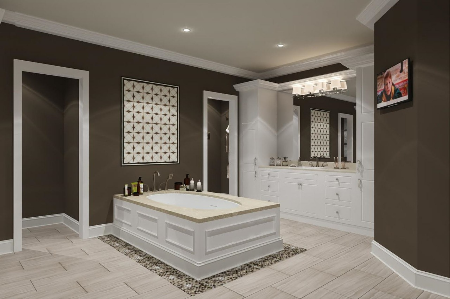
Bathe in Light: 5 Bathroom Lighting Tips to Enliven Your Bathing Space
Friday, November 20, 2020
Lighting for the bathroom is often an afterthought. It's actually important to plan it right so that you can achieve the ambience you want. These five lighting tips for the bathroom will show you how to get lighting up and running beautifully in your bathing space. 1. The Right Lighting Proper and plentiful light in the bathroom has many useful benefits. That includes setting your circadian rhythms that are an important part in over-all health, elevating one's mood, allowing bright illumination for the washing and grooming duties, and more. Most importantly is that it is critical for safety, especially for the elderly or disabled since the bathroom is where 80 percent of falls happen. 2. Minimize Glare
If you are bothered by glare, use fixtures that mask the actual light such as deeply recessed downlights or up-lights or dimmers to make adjustments as needed. Also helpful are tubular fluorescent lights with a frosted lens to reduce the glare.
2. Minimize Glare
If you are bothered by glare, use fixtures that mask the actual light such as deeply recessed downlights or up-lights or dimmers to make adjustments as needed. Also helpful are tubular fluorescent lights with a frosted lens to reduce the glare.
 3. Correct Measurements
Lighting recommended for the dressing area is eye-level provided by fixtures at least 30 inches apart with a minimum of 60 watts. That can be accomplished with chain-hung pendants or wall sconces that provide light on both sides of the face for grooming and applying cosmetics.
3. Correct Measurements
Lighting recommended for the dressing area is eye-level provided by fixtures at least 30 inches apart with a minimum of 60 watts. That can be accomplished with chain-hung pendants or wall sconces that provide light on both sides of the face for grooming and applying cosmetics.
 4. Night Lights
Night lighting is essential to safely maneuver and prevent falls in the middle of the night. Bright overhead lights can be disruptive and blinding when one's eyes are adjusted to darkness. Provide a low-wattage lamp, or one that responds to motion, or create one by illuminating the toe-space area below the vanity with a linear lighting system.
4. Night Lights
Night lighting is essential to safely maneuver and prevent falls in the middle of the night. Bright overhead lights can be disruptive and blinding when one's eyes are adjusted to darkness. Provide a low-wattage lamp, or one that responds to motion, or create one by illuminating the toe-space area below the vanity with a linear lighting system.
 5. Accentuating the Space
A decorative light fixture that is suspended from the ceiling gives any room an elegant touch at the same time that it is adding extra light.
Article courtesy of Patriot LED
5. Accentuating the Space
A decorative light fixture that is suspended from the ceiling gives any room an elegant touch at the same time that it is adding extra light.
Article courtesy of Patriot LED
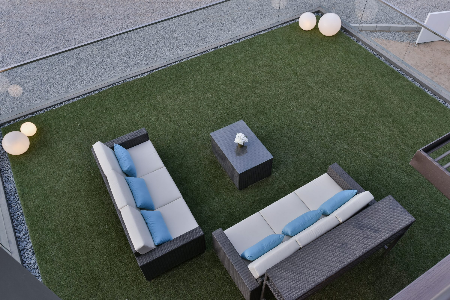
8 Lighting Ideas for Your Gardens and Patios
Friday, November 20, 2020
Beyond merely a consideration of safety or comfort, lighting fixtures in your garden can have truly inexplicable and magical effects on your outdoor spaces.
Appointing your outdoor spaces with lighting is more than just an affordable way of extending living areas or increasing the sense of security and comfort around the home - intriguing lighting fixtures may become the central component of the décor, serve to distribute attention away from a central feature, or intangibly frame a space for more subtle effects. If you find yourself spoilt for choice with the wide selection of various lighting fixtures available, take a look at the following eight inspiring ways of using lighting in outdoor spaces for some ideas.
Minimal Demarcation
 Design by: GDY Design & Construction
Design by: GDY Design & Construction
Applied more for decoration, the matching orbs of light pictured here are used to mark out the edges of the seating area without imposing on the view or the simplicity of the arrangement. As the sun disappears over the horizon, the radiating fields of illumination will accentuate the white fabrics of the seating to create an inviting mood that would have been otherwise overwhelmed by an abundance of lighting.
 Design by: GDY Design & Construction
Design by: GDY Design & Construction
Illuminated Background
 Design by: Latitude Design
Design by: Latitude Design
A wash of light is applied to render this contemporary poolside scene in a monochromatic palette: with a background dominated by an expanse of pale architectural finishes and lined with the dark frames of wood. The simple contrast in shade is complemented by a beach resort ambiance, created with the deliberate placement of lighting to focus attention on the pool and the tropical-style gazebo.
Central Focus
 Design by: Deseo Creativo
The modern gazebo occupies the central position of this outdoor space - indicated by an array of hanging pendant lights, while a border of downward-facing lamps illuminate the footpath around it. As the light emitted from the foot lamps rarely comes into direct contact with the eye, these lamps serve to subtly illuminate the background while the pendant lights narrow focus to the seating furniture.
Design by: Deseo Creativo
The modern gazebo occupies the central position of this outdoor space - indicated by an array of hanging pendant lights, while a border of downward-facing lamps illuminate the footpath around it. As the light emitted from the foot lamps rarely comes into direct contact with the eye, these lamps serve to subtly illuminate the background while the pendant lights narrow focus to the seating furniture.
 Design by: Deseo Creativo
Design by: Deseo Creativo
Indirect Lighting
 Design by: ID Industries
Design by: ID Industries
The poolside of this tropical home is dotted with lighting fixtures that are intended to frame decorative features rather than putting them in the spotlight. The decorative plaster plaques along the pool’s long edge are framed by modern fixtures that cast the light downward, while the shaded lamps hanging from the poolside canopy add to the serene mood.
Reflected Light
 Design by: Regal Violet
Design by: Regal Violet
Few fixtures - if any, can reproduce the mystifying effects of light given motion by way of ripples in water. This enigmatic effect is best served with waterproof lights submerged in or around water features, with relatively plain architectural finishes acting as a backdrop to receive the reflected light.
Luminous Frame
 Design by: Space In Design
Design by: Space In Design
Lighting fixtures arranged into a regular shape rarely produce a result that fits cohesively with a natural landscape - unless that polygon is used to frame a water feature, in which case the result is an enhanced body of water that invites a closer look. While light applied with deliberate geometry may appear out of place in tropical-themed gardens, the effects of lit right-angles complement the manicured gardens of modern urban homes.
Cold Fire
 Design by: Living Space Design
While warm white light is commonly understood as being the most appropriate quality of light for inducing relaxation, the occasional streak of cool white light provides a measure of stark emphasis for dramatic effect. When used in conjunction with a body of water, cool white light creates magical impressions of bluish flames that ripple with the motion of water.
Design by: Living Space Design
While warm white light is commonly understood as being the most appropriate quality of light for inducing relaxation, the occasional streak of cool white light provides a measure of stark emphasis for dramatic effect. When used in conjunction with a body of water, cool white light creates magical impressions of bluish flames that ripple with the motion of water.
Resort Ambiance
 Design by: IDS Interior
Design by: IDS Interior
You don’t necessarily have to spend any time lingering on a beachside resort to get some ideas on how to create a resort-like ambiance at home. Having been repeated countless times around the world, the formula for applying lighting to affect a resort-like outdoor space is fairly established: spotlights directed upwards at foliage, vertically-oriented cones of light along walls, and ethereal underwater lights along the edges of a water feature.
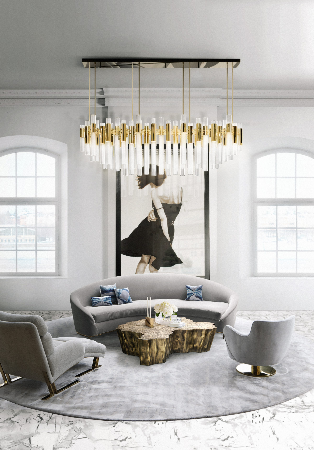
Living Room Lighting Ideas
Friday, November 20, 2020
Now that you have decided on your furnishings, it is time to think about putting your curation in a flattering light.
It would all be for naught, if you put in the time and effort to handpick your furnishings for a dramatic display in daylight - only for them to blend with the shadows when the sun sets. Unless the intended effect was a nocturnal disappearing act, you would want the results of your hard work displayed in full, attention-grabbing light for all to see. With the placement of a few thoughtfully-placed fixtures, even interiors that appear sombre in the evenings can be revitalised.
 Interior design by: Luxxu
Interior design by: Luxxu
While putting together your furniture arrangements, you may want to consider planning for lighting fixtures at the same time - as some forms of lighting require additional fixtures, wiring, or plasterwork in order to complete installations. In this guide, we take a closer look at the various forms of lighting available, their benefits, and the considerations that come with each.
Pendant Lights
 Interior design by: X-Two Concept
Interior design by: X-Two Concept
What minimalism has done to furniture can be seen in modern pendant lights - arguably the result of chandeliers being stripped of their trappings to retain the bare essentials in exposed bulbs. Pendant lights are most suited to modern and minimalist interiors, but are highly versatile with a wide range of styles due to their typically narrow profiles. The installation of pendant lights is not complicated by the weight of the fixtures, but rather by their typical composition in arrays of bulbs, requiring specialist wiring know-how to correctly chain bulbs together without running the risk of shorting out the electrical switchboard.
Spotlights
 Interior design by: Turn Design Interior
Interior design by: Turn Design Interior
For a dramatic cone of light around treasured decorations, consider installing a single spotlight with a narrow zone of effect directly overhead. The result is a gallery-like presentation that is better suited for highlighting specific objects rather than casting light over a wide area. For area effect lighting using spotlights, consider using a number of identical units arranged in a wide array, or selecting a set that includes a rail. Wiring considerations are similar to those for pendant lights, in that their installation is less often plug-and-play, more often requiring specialty adapters or dedicated wiring.
Wall Sconces
 Interior design by: GDY Design & Construction
Interior design by: GDY Design & Construction
Decorative lighting fixtures that are mounted to walls help to indirectly illuminate architectural finishes or to highlight decorative features nearby, however their placement is limited to points in a home where wiring has been provided. The installation of wall sconces, at least in locations that lack the requisite wiring points and corresponding switches, would entail the construction of wiring ducts along portions of walls - a process that typically results in a pervasive cloud of brick and concrete dust. If pre-existing conditions permit, consider using wall sconces in places where floor space is scarce.
Recessed Lighting
 Interior design by: Zids Design
Interior design by: Zids Design
One of the most subtly elegant ways to bestow a space with unobtrusive lighting is with LED strips embedded into the crevices and recesses of plaster ceilings. These lighting strips are typically used alongside white plaster ceilings as the pale surfaces serve to reflect light - in a manner very much like lampshades. The soft and indirect rays of light from recessed LEDs make for a low-profile fixture that blends well with styles ranging from classical to modern. The fixtures themselves are typically lightweight and uncomplicated to install, being made to plug into standard sockets - with the addition of adapters supplied by the manufacturers.
Chandeliers
 Interior design by: Design Integra
Interior design by: Design Integra
Even before electric lighting became a requisite household feature, crystal chandeliers have been used to suspend lighting sources high above the ground. The various crystal components are traditionally cut into specific designs to deliberately magnify and spread light out evenly across large spaces. Intricate crystal chandeliers of antique designs are still being used to appoint classically-inspired interiors, while newer offerings ranging in shape from modest to extravagant are better suited for more contemporary interiors. By virtue of their complicated construction, most chandeliers are hefty fixtures requiring the installation of ceiling hook plates to support the weight - meaning that the placement is limited to load-bearing beams or structural slabs rather than thin plaster ceilings.
Floor Lamps
 Interior design by: Sachi Interior Design
Interior design by: Sachi Interior Design
If you have the floor space to spare, floor lamps are ideal for casting light over a moderately wide area, working best in corners where the light they emit can be multiplied with the aid of pale or reflective surfaces. As floor lamps are not usually fixed, their positions can be changed to adapt with an evolving arrangement - and their production ensures that all is needed to power one is a domestic power outlet.
Table Lamps
 Tip: For a cohesive arrangement: select a table lamp that complements the space, providing a point where the materials and colours of the décor can converge. The pictured modern table lamps highlight the use of reflective metal accents and cream upholstery in the seating lounge, bringing the common materials to a corner of the space. Interior design by: SQFT Space Design Management
Tip: For a cohesive arrangement: select a table lamp that complements the space, providing a point where the materials and colours of the décor can converge. The pictured modern table lamps highlight the use of reflective metal accents and cream upholstery in the seating lounge, bringing the common materials to a corner of the space. Interior design by: SQFT Space Design Management
With an available table surface, a large portion of your lighting needs can be served with the simple placement of table lamp. Perhaps the most cost-effective solution for limited lighting, table lamps are often designed to act as decorative pieces on their own.
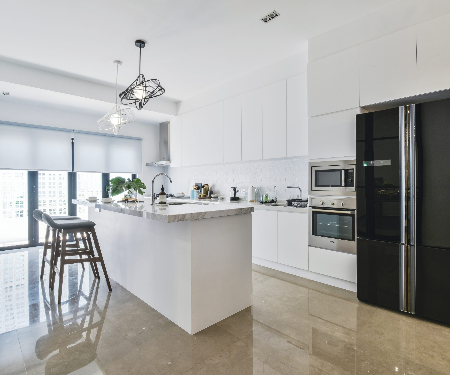
Designer Kitchen Lighting Tips
Friday, November 20, 2020
Don’t let the design of your kitchen be undermined by the shadows, light it up in the ways we describe here.
To say lighting is important is to condense the musings of all artists and designers into a single point of agreement that everyone can subscribe to. Light not only beautifies a space, but in a space as vital — and potentially chaotic — as the kitchen, light also serves as a practical consideration of safety and comfort.
 Interior design by: Yong Studio
Interior design by: Yong Studio
The pre-eminent architect who revolutionised the use of reinforced concrete and open floor plans, Charles-Édouard “Le Corbusier” Jeanneret, described light’s importance most aptly when nominating space, illumination, and order as being equally important as food and sleep in sustaining life. If you’ve planned and configured fixtures in the kitchen to your heart’s content, now would be the time we look into lighting the scene.
Natural Beauty
 Interior design by: Yong Studio
Interior design by: Yong Studio
To paraphrase the words of the late twentieth-century architect, Michael Graves: even panoramic beachfront views can become tiresome, but sunlight streaming into a room never gets old. In the insulated environments of modern convention, surrounded by tinted glass and blackout drapery, the powerful effects of sunlight often go under-appreciated. Yong Studio defies modern convention by opening up the pictured all-white kitchen to the skies with generous windows, appointing them with thin roller blinds to tame the glare of the tropical sun.
Layers of Light
Just as memorable works of art present nuanced blends of light and shadow, a well-lit kitchen requires multiple overlapping sources of light to colour the space, make manual tasks easier, and call attention to decorative features. In the pictured scene, Nine Plus Interior Design demonstrates an example of ideal lighting balance: the smooth white surfaces amplify the soft ambient lighting from the ceiling and the sunlit windows — widening the perception of this relatively compact space, while a hidden strip of light simultaneously draws the eye to the tiled backsplash and makes working on the countertops safer for fast-paced chefs.
 Interior design by: Nine Plus Interior Design
Interior design by: Nine Plus Interior Design
Tip: Light is a notoriously temperamental subject to control, but with a model bulb and accompanying lampshade one can go about testing effects while meticulously composing a visual scene as film directors do.
 Interior design by: Nine Plus Interior Design
Interior design by: Nine Plus Interior Design
Air of Elegance
 Interior design by: JCS Design Project
Interior design by: JCS Design Project
With all of one’s attention paid towards ensuring practical task lighting and orchestrating dramatic accent lighting, the consideration of subtle ambient lighting sometimes gets overlooked. Wide gaps between lighting sources contribute towards a darker space with the presence of shadows—but as demonstrated by JCS Design in the pictured kitchen—the addition of ambient lighting elevates the potential gloom to a soft sheen, providing for a considerably safer environment in which to manoeuvre around while handling hot cookery and cutting utensils.
Accent Aesthetics
 Interior design by: Nu Infinity
Interior design by: Nu Infinity
Even the most simplistic of spaces rendered monochromatic can be given a surprising measure of depth and dimension with the strategic placement of just a few accent lighting fixtures. With attention diverted to decorative features, a scene divides itself—with subtle elements shifting into background and highlighted features moving into the foreground of the composition. Nu Infinity imbues the pictured kitchen with depth by highlighting and transporting the wooden surface of the island counter to the visual foreground—using only a handful of hanging pendant lamps composed from a quality of wood to match and emphasise the island’s wooden surface.
 Interior design by: Nu Infinity
Interior design by: Nu Infinity
Tip: As with the preparation of any dish or concoction, adding more of a particular ingredient will provide greater emphasis for that particular flavour. In decorative terms, the preferred characteristics of a décor can be reinforced with the restrained sprinkling of a favoured texture, material, or colour.
 Interior design by: Nu Infinity
Interior design by: Nu Infinity
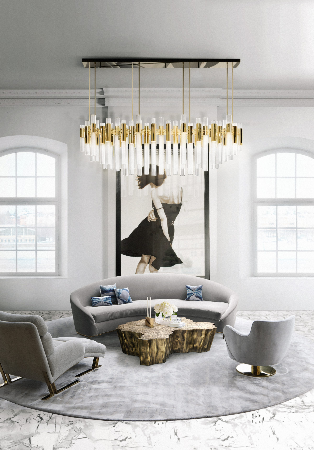
Living Room Lighting Ideas
Friday, November 20, 2020
Now that you have decided on your furnishings, it is time to think about putting your curation in a flattering light.
It would all be for naught, if you put in the time and effort to handpick your furnishings for a dramatic display in daylight - only for them to blend with the shadows when the sun sets. Unless the intended effect was a nocturnal disappearing act, you would want the results of your hard work displayed in full, attention-grabbing light for all to see. With the placement of a few thoughtfully-placed fixtures, even interiors that appear sombre in the evenings can be revitalised.
 Interior design by: Luxxu
Interior design by: Luxxu
While putting together your furniture arrangements, you may want to consider planning for lighting fixtures at the same time - as some forms of lighting require additional fixtures, wiring, or plasterwork in order to complete installations. In this guide, we take a closer look at the various forms of lighting available, their benefits, and the considerations that come with each.
Pendant Lights
 Interior design by: X-Two Concept
Interior design by: X-Two Concept
What minimalism has done to furniture can be seen in modern pendant lights - arguably the result of chandeliers being stripped of their trappings to retain the bare essentials in exposed bulbs. Pendant lights are most suited to modern and minimalist interiors, but are highly versatile with a wide range of styles due to their typically narrow profiles. The installation of pendant lights is not complicated by the weight of the fixtures, but rather by their typical composition in arrays of bulbs, requiring specialist wiring know-how to correctly chain bulbs together without running the risk of shorting out the electrical switchboard.
Spotlights
 Interior design by: Turn Design Interior
Interior design by: Turn Design Interior
For a dramatic cone of light around treasured decorations, consider installing a single spotlight with a narrow zone of effect directly overhead. The result is a gallery-like presentation that is better suited for highlighting specific objects rather than casting light over a wide area. For area effect lighting using spotlights, consider using a number of identical units arranged in a wide array, or selecting a set that includes a rail. Wiring considerations are similar to those for pendant lights, in that their installation is less often plug-and-play, more often requiring specialty adapters or dedicated wiring.
Wall Sconces
 Interior design by: GDY Design & Construction
Interior design by: GDY Design & Construction
Decorative lighting fixtures that are mounted to walls help to indirectly illuminate architectural finishes or to highlight decorative features nearby, however their placement is limited to points in a home where wiring has been provided. The installation of wall sconces, at least in locations that lack the requisite wiring points and corresponding switches, would entail the construction of wiring ducts along portions of walls - a process that typically results in a pervasive cloud of brick and concrete dust. If pre-existing conditions permit, consider using wall sconces in places where floor space is scarce.
Recessed Lighting
 Interior design by: Zids Design
Interior design by: Zids Design
One of the most subtly elegant ways to bestow a space with unobtrusive lighting is with LED strips embedded into the crevices and recesses of plaster ceilings. These lighting strips are typically used alongside white plaster ceilings as the pale surfaces serve to reflect light - in a manner very much like lampshades. The soft and indirect rays of light from recessed LEDs make for a low-profile fixture that blends well with styles ranging from classical to modern. The fixtures themselves are typically lightweight and uncomplicated to install, being made to plug into standard sockets - with the addition of adapters supplied by the manufacturers.
Chandeliers
 Interior design by: Design Integra
Interior design by: Design Integra
Even before electric lighting became a requisite household feature, crystal chandeliers have been used to suspend lighting sources high above the ground. The various crystal components are traditionally cut into specific designs to deliberately magnify and spread light out evenly across large spaces. Intricate crystal chandeliers of antique designs are still being used to appoint classically-inspired interiors, while newer offerings ranging in shape from modest to extravagant are better suited for more contemporary interiors. By virtue of their complicated construction, most chandeliers are hefty fixtures requiring the installation of ceiling hook plates to support the weight - meaning that the placement is limited to load-bearing beams or structural slabs rather than thin plaster ceilings.
Floor Lamps
 Interior design by: Sachi Interior Design
Interior design by: Sachi Interior Design
If you have the floor space to spare, floor lamps are ideal for casting light over a moderately wide area, working best in corners where the light they emit can be multiplied with the aid of pale or reflective surfaces. As floor lamps are not usually fixed, their positions can be changed to adapt with an evolving arrangement - and their production ensures that all is needed to power one is a domestic power outlet.
Table Lamps
 Tip: For a cohesive arrangement: select a table lamp that complements the space, providing a point where the materials and colours of the décor can converge. The pictured modern table lamps highlight the use of reflective metal accents and cream upholstery in the seating lounge, bringing the common materials to a corner of the space. Interior design by: SQFT Space Design Management
Tip: For a cohesive arrangement: select a table lamp that complements the space, providing a point where the materials and colours of the décor can converge. The pictured modern table lamps highlight the use of reflective metal accents and cream upholstery in the seating lounge, bringing the common materials to a corner of the space. Interior design by: SQFT Space Design Management
With an available table surface, a large portion of your lighting needs can be served with the simple placement of table lamp. Perhaps the most cost-effective solution for limited lighting, table lamps are often designed to act as decorative pieces on their own.
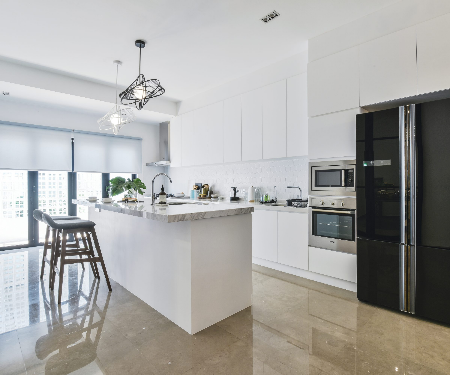
Designer Kitchen Lighting Tips
Friday, November 20, 2020
Don’t let the design of your kitchen be undermined by the shadows, light it up in the ways we describe here.
To say lighting is important is to condense the musings of all artists and designers into a single point of agreement that everyone can subscribe to. Light not only beautifies a space, but in a space as vital — and potentially chaotic — as the kitchen, light also serves as a practical consideration of safety and comfort.
 Interior design by: Yong Studio
Interior design by: Yong Studio
The pre-eminent architect who revolutionised the use of reinforced concrete and open floor plans, Charles-Édouard “Le Corbusier” Jeanneret, described light’s importance most aptly when nominating space, illumination, and order as being equally important as food and sleep in sustaining life. If you’ve planned and configured fixtures in the kitchen to your heart’s content, now would be the time we look into lighting the scene.
Natural Beauty
 Interior design by: Yong Studio
Interior design by: Yong Studio
To paraphrase the words of the late twentieth-century architect, Michael Graves: even panoramic beachfront views can become tiresome, but sunlight streaming into a room never gets old. In the insulated environments of modern convention, surrounded by tinted glass and blackout drapery, the powerful effects of sunlight often go under-appreciated. Yong Studio defies modern convention by opening up the pictured all-white kitchen to the skies with generous windows, appointing them with thin roller blinds to tame the glare of the tropical sun.
Layers of Light
Just as memorable works of art present nuanced blends of light and shadow, a well-lit kitchen requires multiple overlapping sources of light to colour the space, make manual tasks easier, and call attention to decorative features. In the pictured scene, Nine Plus Interior Design demonstrates an example of ideal lighting balance: the smooth white surfaces amplify the soft ambient lighting from the ceiling and the sunlit windows — widening the perception of this relatively compact space, while a hidden strip of light simultaneously draws the eye to the tiled backsplash and makes working on the countertops safer for fast-paced chefs.
 Interior design by: Nine Plus Interior Design
Interior design by: Nine Plus Interior Design
Tip: Light is a notoriously temperamental subject to control, but with a model bulb and accompanying lampshade one can go about testing effects while meticulously composing a visual scene as film directors do.
 Interior design by: Nine Plus Interior Design
Interior design by: Nine Plus Interior Design
Air of Elegance
 Interior design by: JCS Design Project
Interior design by: JCS Design Project
With all of one’s attention paid towards ensuring practical task lighting and orchestrating dramatic accent lighting, the consideration of subtle ambient lighting sometimes gets overlooked. Wide gaps between lighting sources contribute towards a darker space with the presence of shadows—but as demonstrated by JCS Design in the pictured kitchen—the addition of ambient lighting elevates the potential gloom to a soft sheen, providing for a considerably safer environment in which to manoeuvre around while handling hot cookery and cutting utensils.
Accent Aesthetics
 Interior design by: Nu Infinity
Interior design by: Nu Infinity
Even the most simplistic of spaces rendered monochromatic can be given a surprising measure of depth and dimension with the strategic placement of just a few accent lighting fixtures. With attention diverted to decorative features, a scene divides itself—with subtle elements shifting into background and highlighted features moving into the foreground of the composition. Nu Infinity imbues the pictured kitchen with depth by highlighting and transporting the wooden surface of the island counter to the visual foreground—using only a handful of hanging pendant lamps composed from a quality of wood to match and emphasise the island’s wooden surface.
 Interior design by: Nu Infinity
Interior design by: Nu Infinity
Tip: As with the preparation of any dish or concoction, adding more of a particular ingredient will provide greater emphasis for that particular flavour. In decorative terms, the preferred characteristics of a décor can be reinforced with the restrained sprinkling of a favoured texture, material, or colour.
 Interior design by: Nu Infinity
Interior design by: Nu Infinity
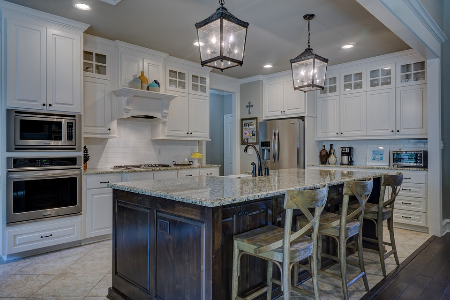
Light and Bright: 5 Kitchen Lighting Tips to Enhance Your Space
Friday, November 20, 2020
When a homeowner is busy remodeling the kitchen, often the lighting isn't considered to be a priority. However, having beautiful and efficient lighting in the kitchen not only adds to the functionality and adequate illumination, but also enhances the outstanding looks that can often be accomplished by rather simple and affordable remedies. 1. Plan Your Lighting
No one overhead ceiling-mounted fixture or recessed lighting can light the entire kitchen properly, so investigate the different types of light and the number and placement of fixtures needed for your space for the maximum benefit. For example, task lighting is most effective when it is placed below the upper cabinets with fluorescent under-cabinet lighting. Or you can install a chandelier hanging from the ceiling so that it makes it easy to read a recipe and do prep work on the work surface of an island or table.
1. Plan Your Lighting
No one overhead ceiling-mounted fixture or recessed lighting can light the entire kitchen properly, so investigate the different types of light and the number and placement of fixtures needed for your space for the maximum benefit. For example, task lighting is most effective when it is placed below the upper cabinets with fluorescent under-cabinet lighting. Or you can install a chandelier hanging from the ceiling so that it makes it easy to read a recipe and do prep work on the work surface of an island or table.
 2. Highlight Your Kitchen
Accent lighting gives depth and dimension such as adjustable fixtures inside glass-front cabinets that will illuminate precious collections, hobbies, art, china, glassware, knickknacks, and other items that will make your kitchen unique, colorful, and be a conversation piece.
2. Highlight Your Kitchen
Accent lighting gives depth and dimension such as adjustable fixtures inside glass-front cabinets that will illuminate precious collections, hobbies, art, china, glassware, knickknacks, and other items that will make your kitchen unique, colorful, and be a conversation piece.
 3. Go White
White reflects light and bounces it back into the room, making the space feel brighter and well-illuminated while allowing a lower wattage of bulbs and a conservation of energy. So consider white for the walls, ceiling, cabinets, and countertops to maximize the light. A kitchen having dark surfaces requires one-third more light than a kitchen with lighter surfaces.
3. Go White
White reflects light and bounces it back into the room, making the space feel brighter and well-illuminated while allowing a lower wattage of bulbs and a conservation of energy. So consider white for the walls, ceiling, cabinets, and countertops to maximize the light. A kitchen having dark surfaces requires one-third more light than a kitchen with lighter surfaces.
 4. Use Pendant Lamps
Pendant lights not only give a lot of direct task lighting, but they also allow for a variety of sizes, shapes, colors, styles, and decorative features to add to the looks of your kitchen.
4. Use Pendant Lamps
Pendant lights not only give a lot of direct task lighting, but they also allow for a variety of sizes, shapes, colors, styles, and decorative features to add to the looks of your kitchen.
 5. Install Dimmers
Have dimmers on the various lights so that you can have bright light when you are cooking and doing chores, but then be able to dim the lights to linger over a meal or dessert or create warmth and ambience.
Article courtesy of Patriot LED
5. Install Dimmers
Have dimmers on the various lights so that you can have bright light when you are cooking and doing chores, but then be able to dim the lights to linger over a meal or dessert or create warmth and ambience.
Article courtesy of Patriot LED
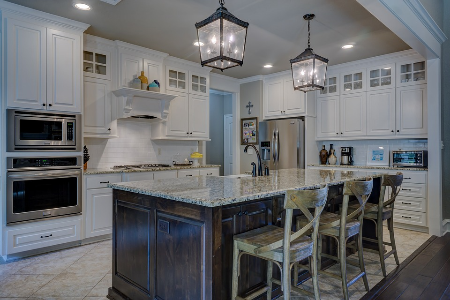
Light and Bright: 5 Kitchen Lighting Tips to Enhance Your Space
Friday, November 20, 2020
When a homeowner is busy remodeling the kitchen, often the lighting isn't considered to be a priority. However, having beautiful and efficient lighting in the kitchen not only adds to the functionality and adequate illumination, but also enhances the outstanding looks that can often be accomplished by rather simple and affordable remedies. 1. Plan Your Lighting
No one overhead ceiling-mounted fixture or recessed lighting can light the entire kitchen properly, so investigate the different types of light and the number and placement of fixtures needed for your space for the maximum benefit. For example, task lighting is most effective when it is placed below the upper cabinets with fluorescent under-cabinet lighting. Or you can install a chandelier hanging from the ceiling so that it makes it easy to read a recipe and do prep work on the work surface of an island or table.
1. Plan Your Lighting
No one overhead ceiling-mounted fixture or recessed lighting can light the entire kitchen properly, so investigate the different types of light and the number and placement of fixtures needed for your space for the maximum benefit. For example, task lighting is most effective when it is placed below the upper cabinets with fluorescent under-cabinet lighting. Or you can install a chandelier hanging from the ceiling so that it makes it easy to read a recipe and do prep work on the work surface of an island or table.
 2. Highlight Your Kitchen
Accent lighting gives depth and dimension such as adjustable fixtures inside glass-front cabinets that will illuminate precious collections, hobbies, art, china, glassware, knickknacks, and other items that will make your kitchen unique, colorful, and be a conversation piece.
2. Highlight Your Kitchen
Accent lighting gives depth and dimension such as adjustable fixtures inside glass-front cabinets that will illuminate precious collections, hobbies, art, china, glassware, knickknacks, and other items that will make your kitchen unique, colorful, and be a conversation piece.
 3. Go White
White reflects light and bounces it back into the room, making the space feel brighter and well-illuminated while allowing a lower wattage of bulbs and a conservation of energy. So consider white for the walls, ceiling, cabinets, and countertops to maximize the light. A kitchen having dark surfaces requires one-third more light than a kitchen with lighter surfaces.
3. Go White
White reflects light and bounces it back into the room, making the space feel brighter and well-illuminated while allowing a lower wattage of bulbs and a conservation of energy. So consider white for the walls, ceiling, cabinets, and countertops to maximize the light. A kitchen having dark surfaces requires one-third more light than a kitchen with lighter surfaces.
 4. Use Pendant Lamps
Pendant lights not only give a lot of direct task lighting, but they also allow for a variety of sizes, shapes, colors, styles, and decorative features to add to the looks of your kitchen.
4. Use Pendant Lamps
Pendant lights not only give a lot of direct task lighting, but they also allow for a variety of sizes, shapes, colors, styles, and decorative features to add to the looks of your kitchen.
 5. Install Dimmers
Have dimmers on the various lights so that you can have bright light when you are cooking and doing chores, but then be able to dim the lights to linger over a meal or dessert or create warmth and ambience.
Article courtesy of Patriot LED
5. Install Dimmers
Have dimmers on the various lights so that you can have bright light when you are cooking and doing chores, but then be able to dim the lights to linger over a meal or dessert or create warmth and ambience.
Article courtesy of Patriot LED





